Overview
- Google is the #3 technology & telecommunications brand and #16 in the 2019 Brand Intimacy Study overall
- The brand is #1 for the enhancement archetype, which characterizes a brand as making users better through its use
- It is also #1 for the percentage of users that use the brand daily and #2 for the percentage of users that say they can’t live without the brand
Technology & telecommunications continues to be a highly intimate industry in 2019, improving its position among the fifteen industries in the Brand Intimacy Study since last year from #4 to #3. Although Apple is no longer the most intimate brand overall, consumers have strong emotional connections with the brands in this category.
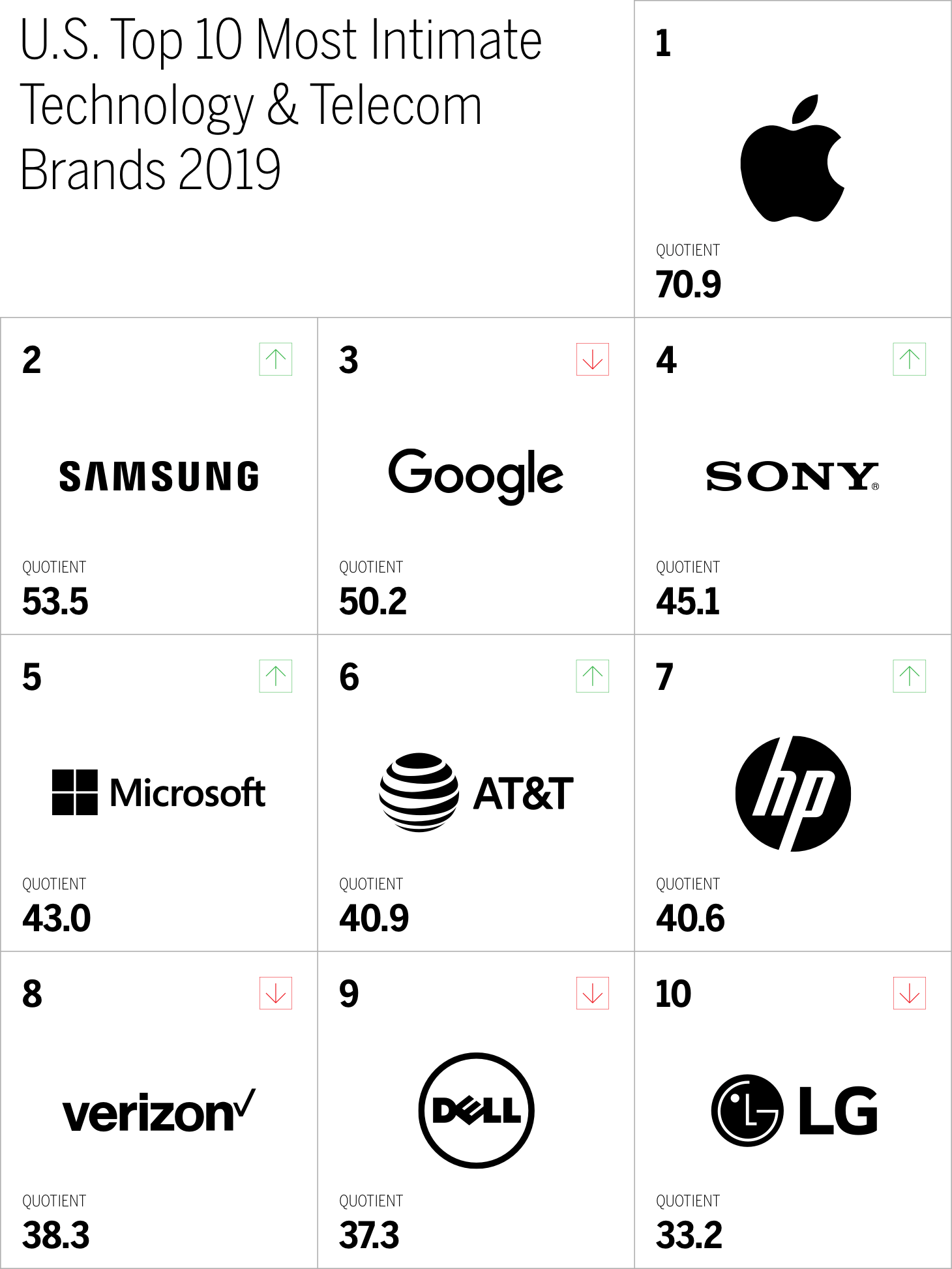
Another category brand that has fallen in the rankings is Google, which was pushed out of the overall top ten this year to #16 and from #2 in technology & telecommunications to #3 behind Samsung. Still, Google remains a highly intimate brand with a unique Brand Intimacy profile.
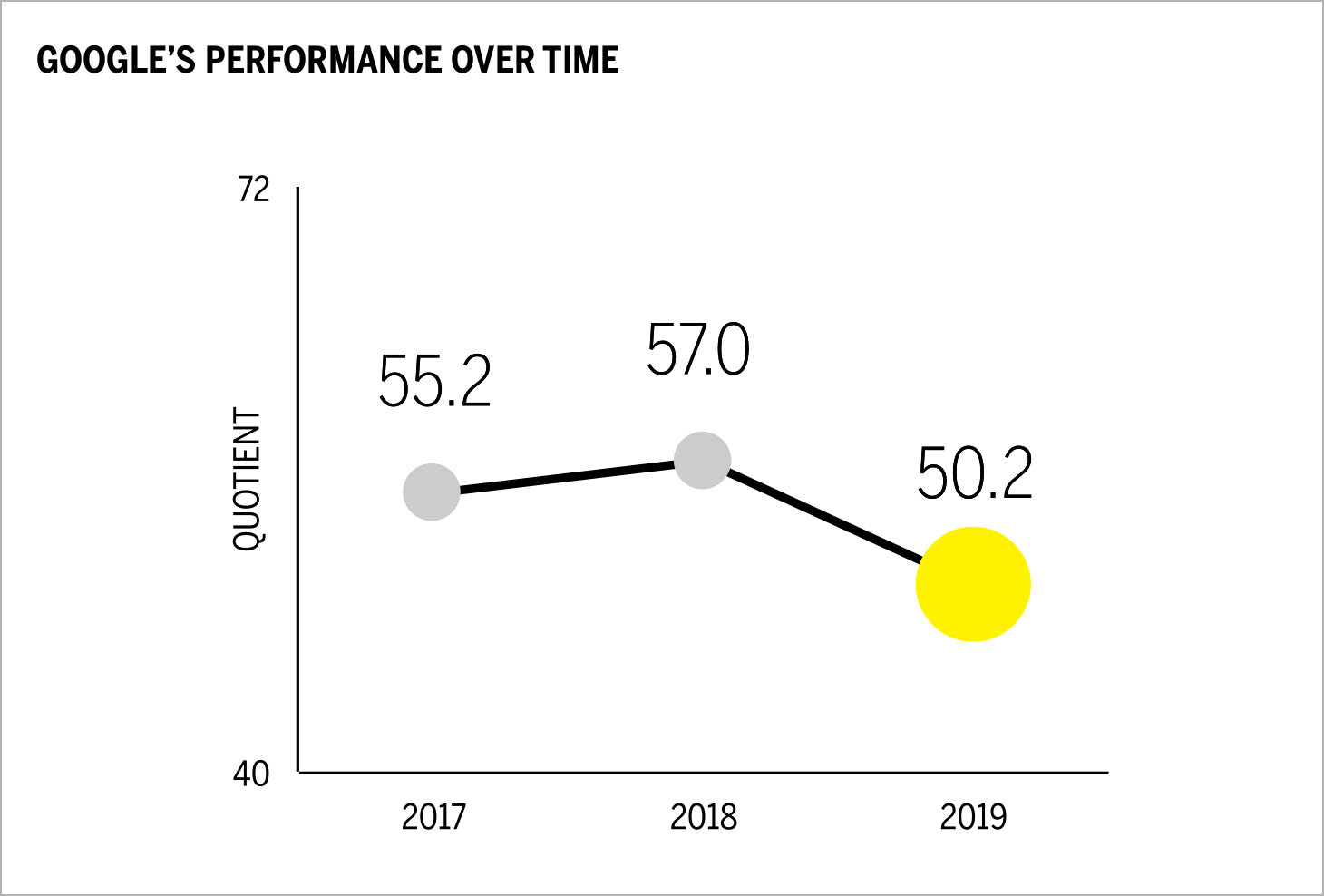
Considering its recent dip in performance and its significant potential going forward, we’re breaking down our key Brand Intimacy findings for Google to better understand how this brand builds bonds and what opportunities it has to become more intimate.
The best at making you better
To most consumers, Google is first and foremost a search engine. True, the brand offers laptops and cloud storage, but its name has long been synonymous with looking something up, and that’s an association that’s hard to ignore. It is the #1 brand overall for the enhancement archetype, which is characterized by customers becoming better (smarter, more capable, and more connected) through use of the brand.
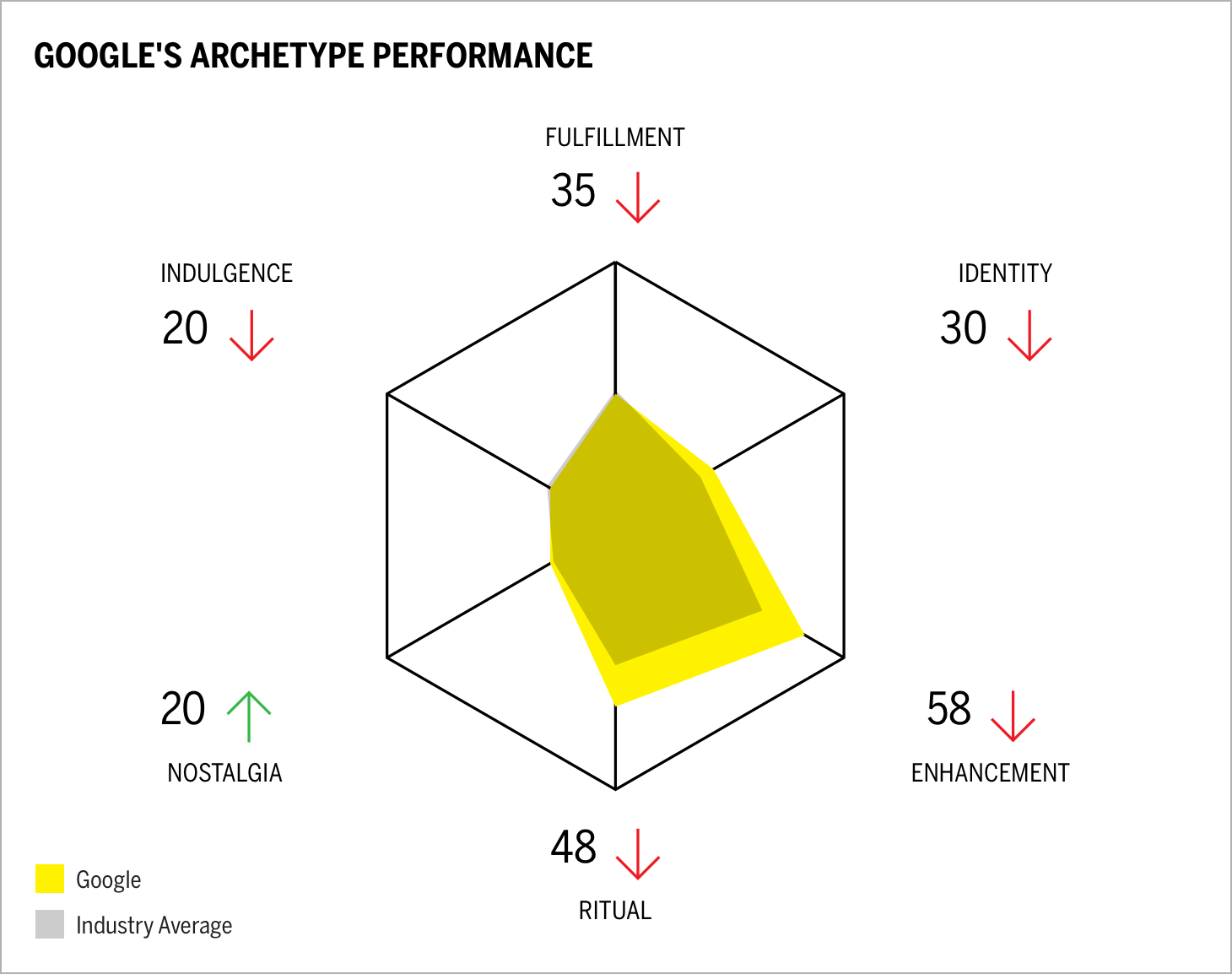
Every day I’m Googlin’
Another key strength for Google is its consistent presence in consumers’ daily lives. It is the top brand overall for daily usage, with an impressive 83 percent of Google users using the brand every day.
Top 5 brand for daily use
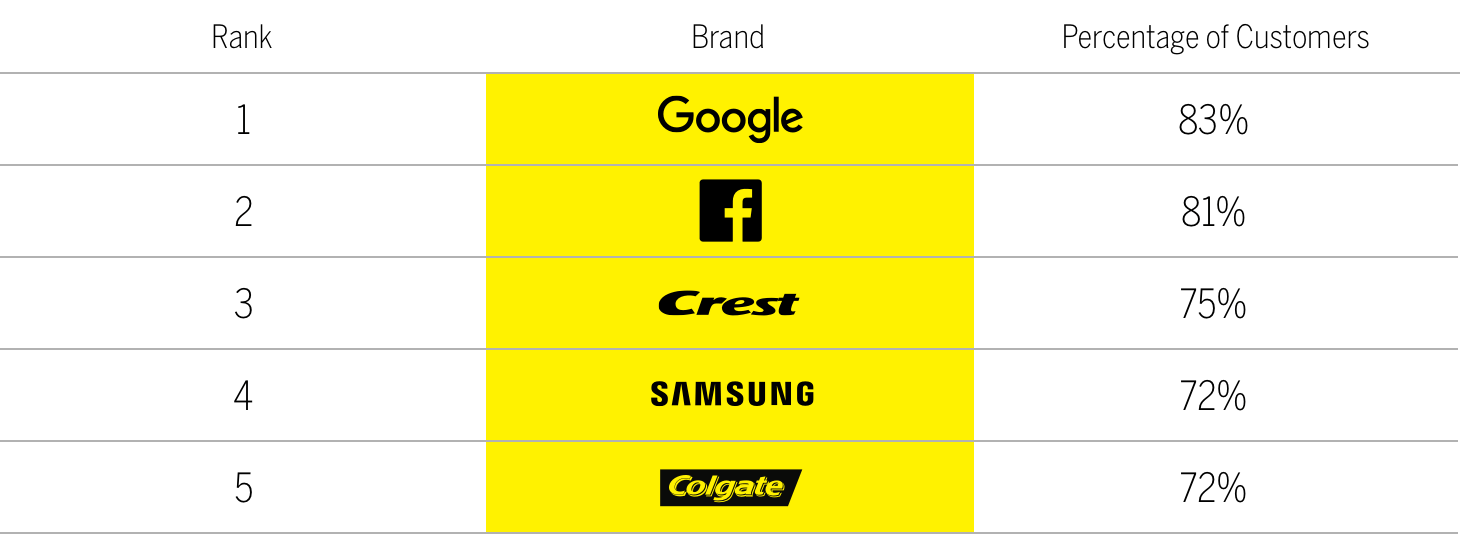
Google is seen as essential. In fact, it was the #2 brand overall for the percentage of consumers who said they couldn’t live without the brand. The brand’s essential nature might also explain why users seem to connect with the brand so quickly—48 percent of consumers feel an immediate emotional connection with the brand when they start using it. The high rate of daily use also speaks to why Google does so well with the ritual archetype, which describes a brand that becomes ingrained into a person’s daily actions and a vitally important part of their existence.
Top 5 brands users can’t live without
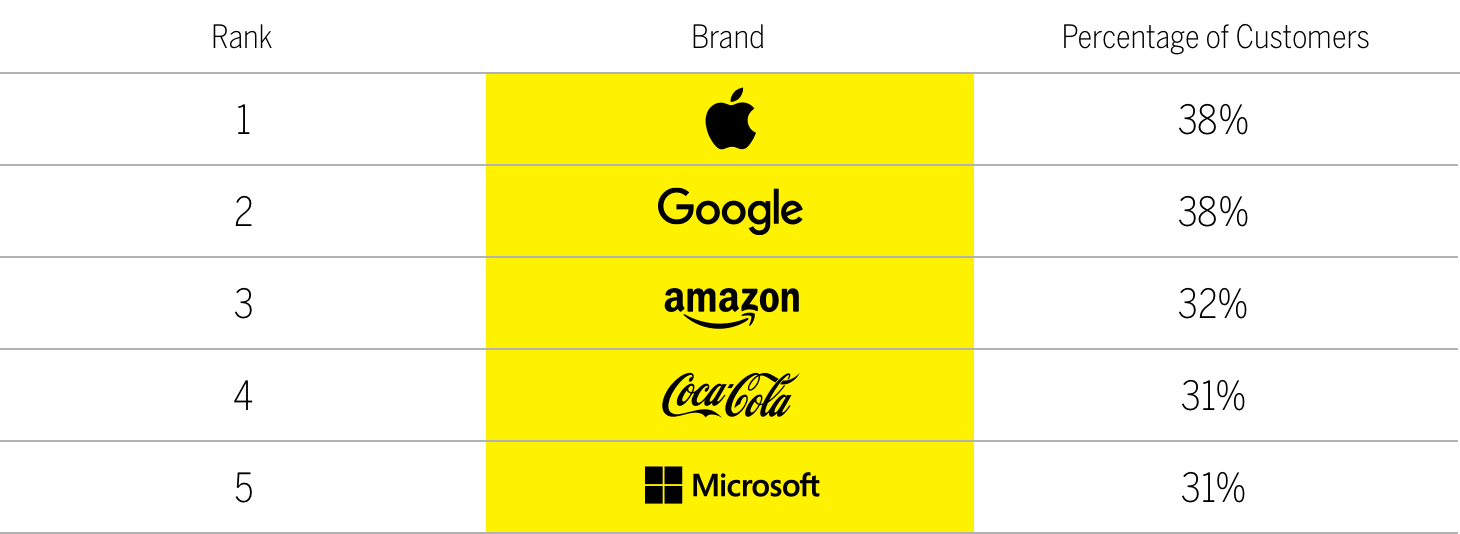
The idea of being essential also ties to the industry as a whole. Technology & telecommunications is the #1 industry for its percentage of users that can’t live without its brands and Apple is the top brand for this metric overall.
Did trust bite the dust?
To better understand Google’s drop in performance since last year, we can look at its percentage of users in each of the three stages of Brand Intimacy.
Stages of Brand Intimacy for Google: 2019 vs. 2018
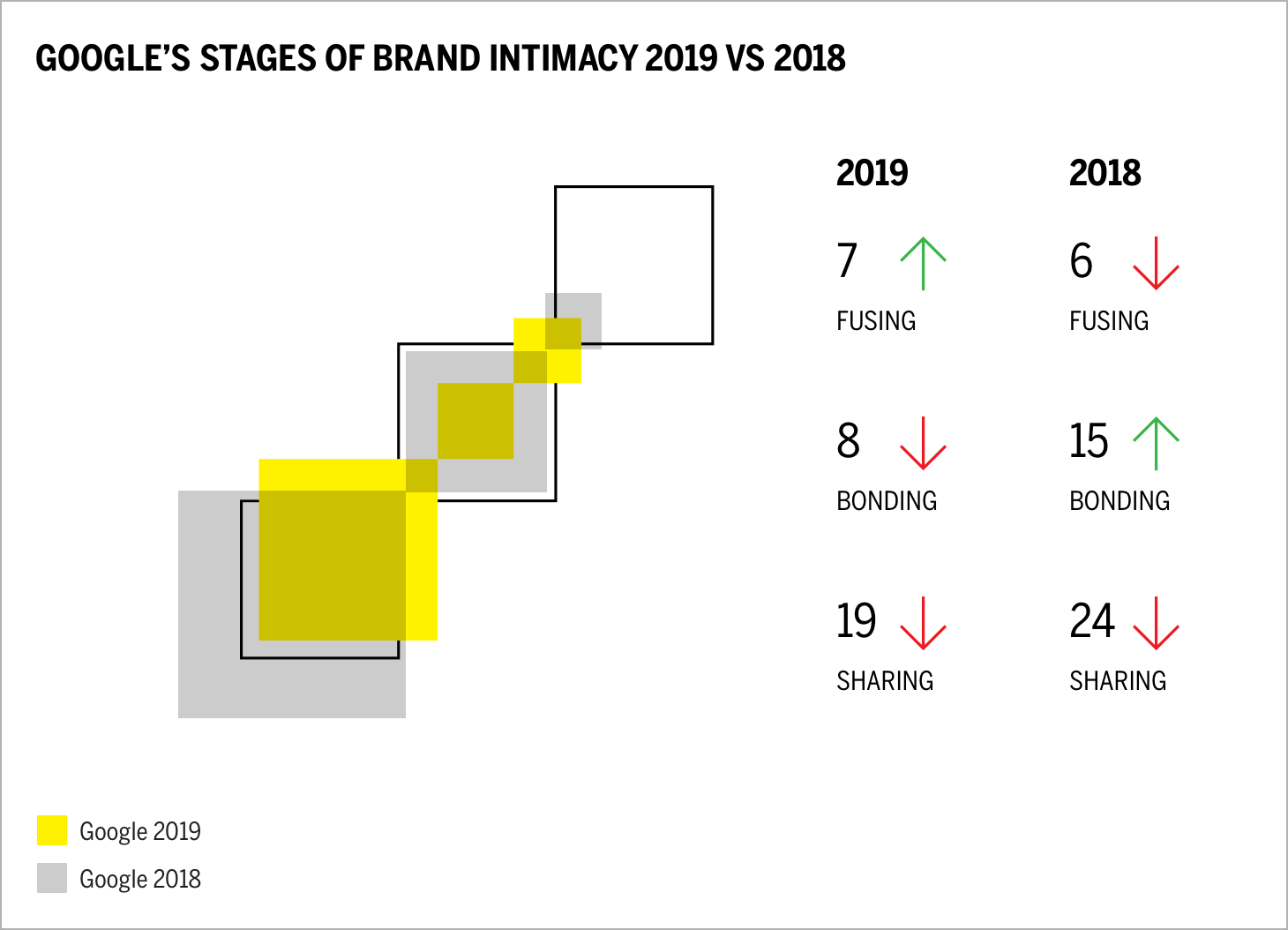
The most significant change for Google was its 7-point drop in the bonding stage, which is when an attachment is created between a person and a brand and trust is established. Trust can be a touchy subject for tech giants these days. In 2018, Google (along with companies like Facebook) faced its fair share of controversy: its CEO appeared before Congress after being accused of suppressing conservative voices in its search results, it was condemned by some of its employees for helping the Pentagon analyze drone footage, it was protested for protecting executives who had been accused of sexual harassment and misconduct, and it was criticized for collecting location data on users who had their “Location History” turned off.
Any one of these incidents could be considered a breach of trust by consumers, and this can be especially problematic for such a data-driven company. A year of so many controversies likely played a role in the decline of users in the bonding stage. Google certainly hasn’t seen its final controversy, but the brand will have to take precautions in the future to avoid scandal whenever possible and be sure to handle these situations transparently if it hopes to maintain the public’s trust.
More luck with millennials
One demographic that has a little more love than most for Google is millennials. The brand ranks #9 overall among this group (compared to #16 across all age groups), with an average Brand Intimacy Quotient of 61.1 (compared to 50.2).
Top 10 brands for millennials 2019
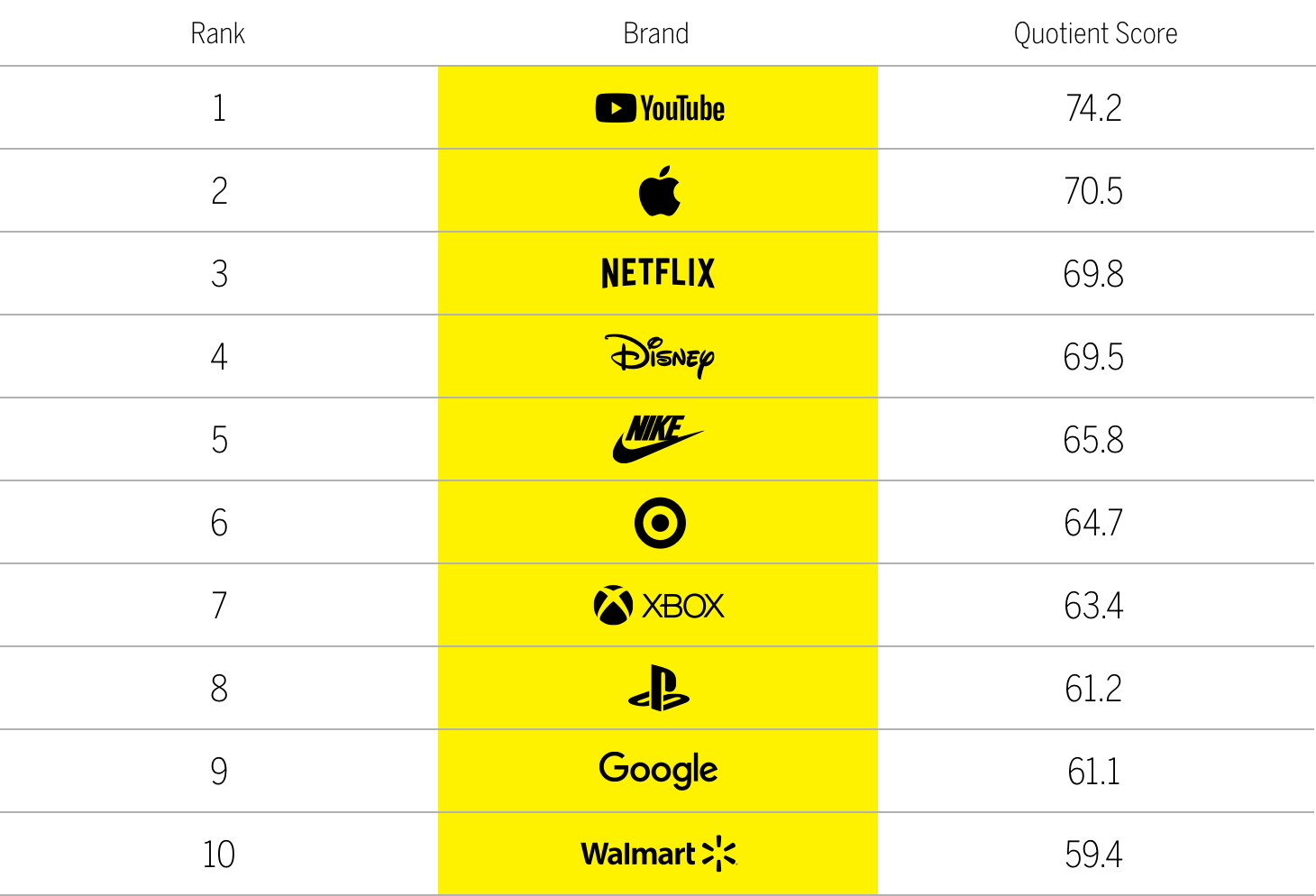
Naturally, millennials are typically more tech-savvy than older consumers, so it makes sense that a technology brand like Google would have more success connecting with them. Additionally, millennials are a generation that values much of what Google provides: unfettered access to information, intuitive user experiences, and free services. We’ve also learned that younger users are more experience-driven than product-driven, which bodes well for Google, a company that is more known for its services than its products.
Another explanation for Google’s success connecting with millennials is the brand’s most popular subsidiary: YouTube. Apart from having over 800 million unique monthly visitors and being the most-used music streaming platform, the video-sharing site is also the most intimate brand for millennials in our study. It’s difficult to say how much consumers’ relationships with Youtube might influence their feelings about Google, but it certainly can’t hurt. Regardless, Google is successfully connecting with millennials, and with YouTube, it has their most beloved brand in its arsenal.
Diving deeper into devices
Google has long been a household name for its services, but in recent years, it’s created an impressive portfolio of devices as well. From the Pixel family (the Pixel phones, the Pixel Slate tablet, the Pixelbook laptop, and the Google Pixel Buds) to the brand’s ever-growing suite of Google Home products (Google Home, Google Home Mini, Google Home Hub) and the smart-home products of its subsidiary Nest, the brand is carving out a serious corner for itself in the physical world. Google also offers devices for home entertainment, like its Chromecast products for streaming video and its Daydream View for virtual reality experiences. This has important impact for the brand as well.
The smartphone ecosystem
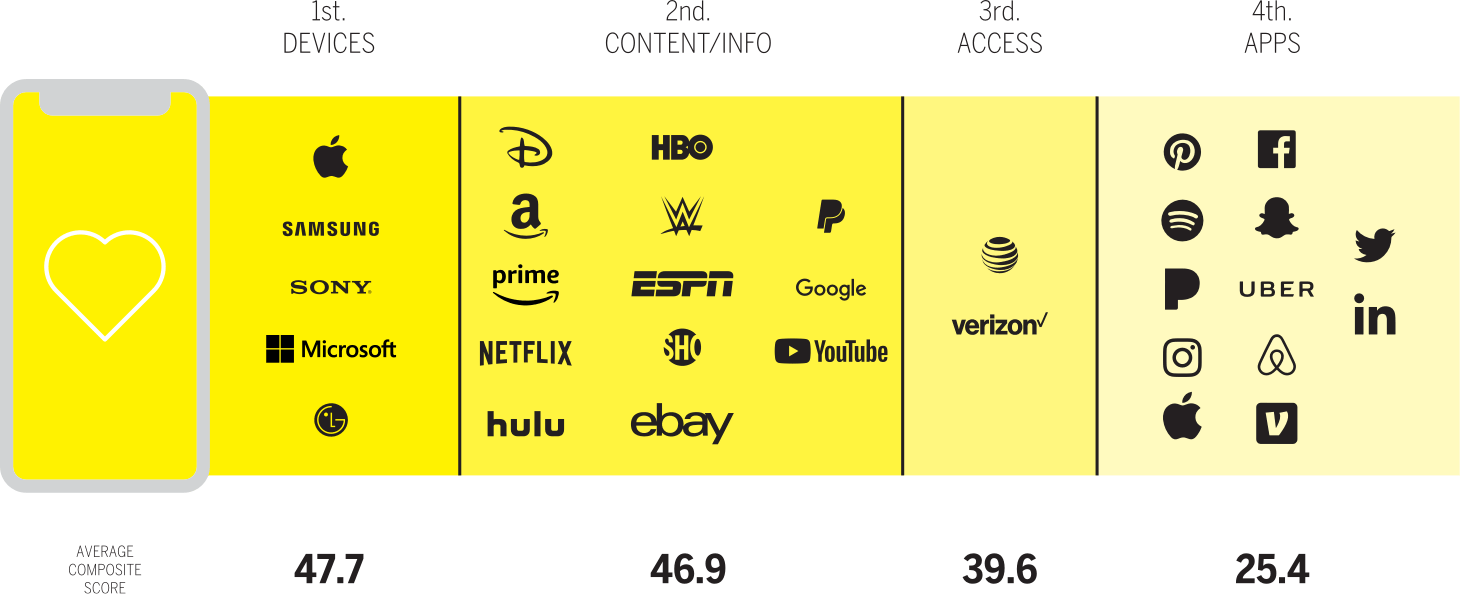
In the last few years of our study, we’ve recognized the important role that smartphones play in consumers’ daily lives, and we’ve measured these devices’ effect on Brand Intimacy. What we’ve found is that brands that have an active presence on smartphones tend to have higher rates of Brand Intimacy than those that don’t. We call this system of brands “the smartphone ecosystem.” We’ve also found that the most intimate group of brands in this ecosystem are those that make the devices themselves, followed by content/info services (like Google), access brands, and apps. It appears that when it comes to technology, consumers are more inclined to connect with the brand providing the physical aspect of the experience. If Google continues to establish itself as a smartphone manufacturer and is able to increase the presence of its smart devices in consumers’ homes, it could successfully own more of the physical aspects of the technology experience and therefore make significant strides in optimizing its Brand Intimacy profile.
Conclusion
Google is the epitome of an intimate technology & telecommunications brand: it is largely linked with enhancement, frequent usage, and ritual, and it is successful at connecting with millennials.
Going forward, the brand has a few key challenges of varying difficulty. Firstly, it must remain essential, but this shouldn’t be a problem for the world’s go-to search engine. Next, it needs to increase its presence in the physical world with devices, which will be a challenge with smartphone competitors like Apple and Samsung, and with Amazon establishing itself as the dominant smart-home brand. But Google is off to a great start and has its advantages in artificial intelligence. Finally, Google needs to maintain the trust of the public, which sounds simple, but it is a data giant that makes most of its revenue from advertising and that has cameras in an increasing number of consumer homes. This certainly doesn’t make it an untrustworthy brand, but it means that trust is key, and the burden is on Google to show consumers that it has their best interests in mind.
At this point, it seems certain that Google will continue to have an intimate future, but for such an essential brand with so much potential, could it eventually reach the top of the Brand Intimacy rankings?
Check out our annual study and rankings of intimate brands. Visit our most recent rankings of intimate famous figures—BFF. Our Amazon best-selling book is available at all your favorite booksellers. To learn more about our Agency, Lab, and Platform visit mblm.com.
